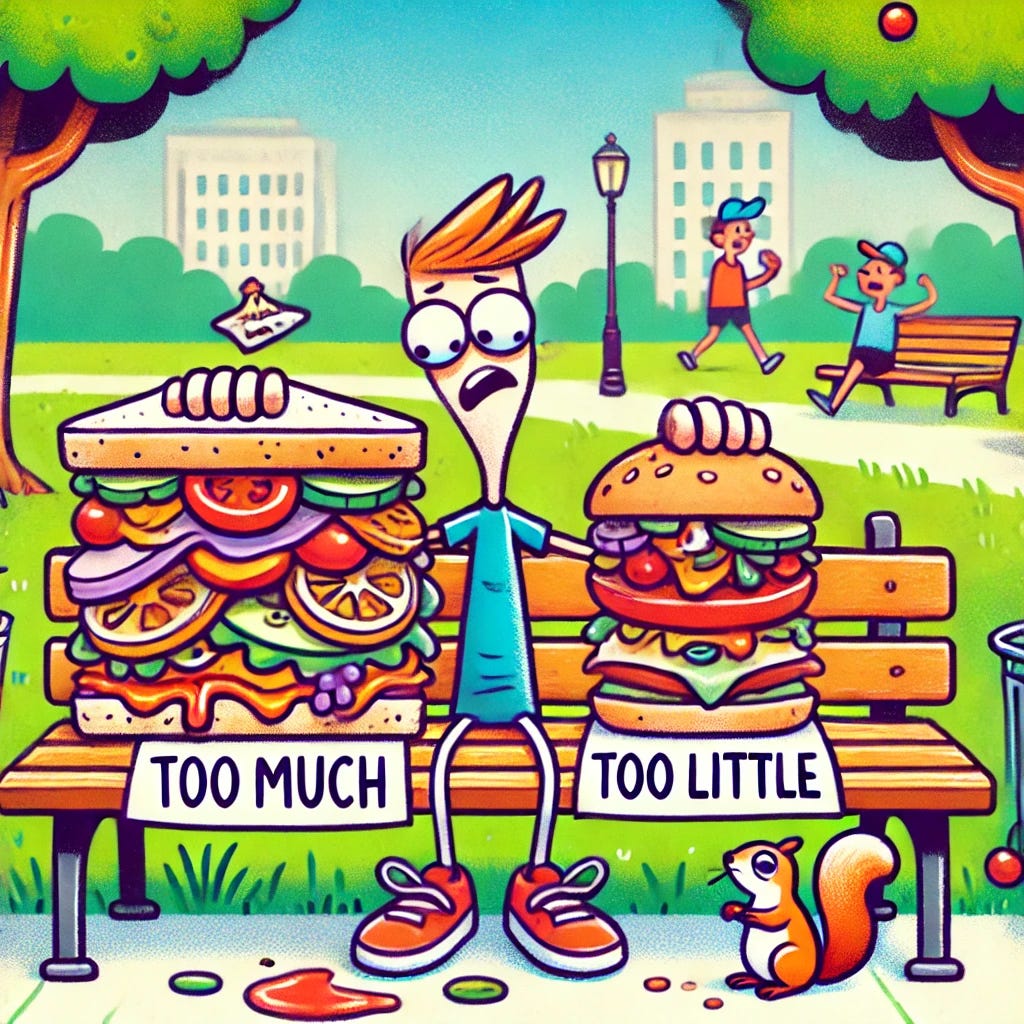Two Reports Walk into My Inbox...
Too much is annoying, Too little is useless. But it's not about finding the right balance !
Expecting a joke from the title ? ok… There you are ! Got two reports today: one was a novel, the other a tweet. Neither told me what I needed, but at least one killed fewer trees.
Today is one of those days where the inbox is a battlefield. But I wanted to take a break for a quick Sunday post :)
This evening, within the span of an hour, two investor reports arrived in my inbox, one from each side of the spectrum. The first was a beast… Pages upon pages of numbers, graphs, projections, all beautifully formatted but utterly overwhelming. I spent a few minutes scrolling before realising that I would need a full afternoon and a shovel to make sense of it.
Then came the second report. This one was the polar opposite. A single page, sparse to the point of being skeletal. Revenue was “up,” costs were “steady,” and they were “excited for the next quarter.” That was it. It left me with nothing to grasp, no foothold to dig deeper or even ask a useful question.
Both were frustrating in their own ways. The first made me feel like I was drowning; the second, like I was parched in a desert. Neither hit the mark, and as I stared at the screen, I couldn’t help but think: this isn’t just about reporting. It’s about how we approach everything—work, decisions, relationships. We sometimes tend to overdo or underdo, rarely striking that elusive balance.
Overdoing
Back in my early days, I worked with an entrepreneur who epitomized this. Every pitch deck he made was a work of art—animations, detailed case studies, every single metric tracked and explained. It was impressive, but it was also exhausting. Investors stopped asking questions halfway through, not because they were convinced, but because they were overwhelmed.
He’d later joke that his slides were a “sedative in PowerPoint form.” But the lesson stuck with me: too much information, no matter how impressive, can be just as ineffective as too little.
The goal of a first meeting with an investor is to build rapport, then credibility and through the rest of the meeting trigger a second meeting :)
Underdoing
I once met a founder who had a brilliant product but a peculiar habit… He refused to pitch. “The product speaks for itself,” he’d say, tossing his prototype on the table like it was a magic trick. When people didn’t respond the way he hoped, he’d blame them for not “getting it.”
He was wrong. The product didn’t speak for itself; nothing does. A good idea, like a good story, needs context, emotion, and a bit of flair to come alive. Without them, you’re left with something half-baked, no matter how much potential it has.
What now ?
Life is full of these extremes. Look at decision-making: take too long, and you lose momentum; rush in, and you miss the nuances. Budgets, team meetings, even personal relationships—they all teeter on this tightrope.
I’ve found the balance is rarely about doing less or more but…
Going after the right objectives !
Turning complex into simple !
You don’t need to crush every task or cut corners; you just need to focus on what moves the needle. Whether it’s a report, a decision, or even a conversation, the goal is to be purposeful and clear.
Going after the right objectives
Clarity Saves Time and Energy
If you don’t know where you’re going, any path will take you there—but it’ll waste your time, resources, and patience. Choosing the right objectives keeps you from chasing shiny distractions and ensures every effort has a purpose. Think of it as a GPS for success: you wouldn’t start driving without punching in your destination.Not All Goals Are Created Equal
Some objectives are stepping stones; others are mirages. A startup founder might obsess over perfecting a logo instead of securing their first customers (not a joke…). Ask yourself: is this goal moving the needle or just making you feel busy? The right objectives create momentum, not stagnation.Progress Is a Series of Wins
Great outcomes are the sum of smaller, well-chosen goals. Whether it’s climbing a mountain or scaling a business, every step should be intentional. Picking the right objectives means building a ladder, not stacking random bricks.
Turning Complex into Simple
Simplicity Drives Action
Complexity paralyzes people. A plan that feels like assembling IKEA furniture in the dark will sit untouched. Simplify it, and suddenly, people know where to start. Apple’s success wasn’t just great products—it was turning tech jargon into “It just works.”Complexity Confuses, Simplicity Persuades
A clear, simple message wins hearts and minds. Imagine pitching to investors: do you want them bogged down in technical diagrams, or inspired by a one-line explanation that makes them go, “Wow, I get it!”?Simplicity Scales
Complex systems break under pressure. Simple ones adapt and grow. Whether it’s a business strategy or a morning routine, simplicity creates room for flexibility and improvement.Great Minds Simplify, Not Complicate
Einstein said, “If you can’t explain it simply, you don’t understand it well enough.” The real brilliance lies in distilling complexity into something elegant. Simplicity isn’t dumbing things down—it’s making them accessible.Complexity Wastes Resources
Every layer of unnecessary complexity costs time and money. A convoluted process makes you slower; a straightforward one makes you nimble. In a world where speed matters, simplicity is your superpower.
Back to my inbox…
As I closed those two reports and send this note, I can’t help but smile. They were reminders—not just of what to avoid but of what to strive for. Not perfection, but clarity. Not overdoing or underdoing, but just enough to keep moving forward without losing your way.
Keep it up. Wait… no… Keep it simple :)

